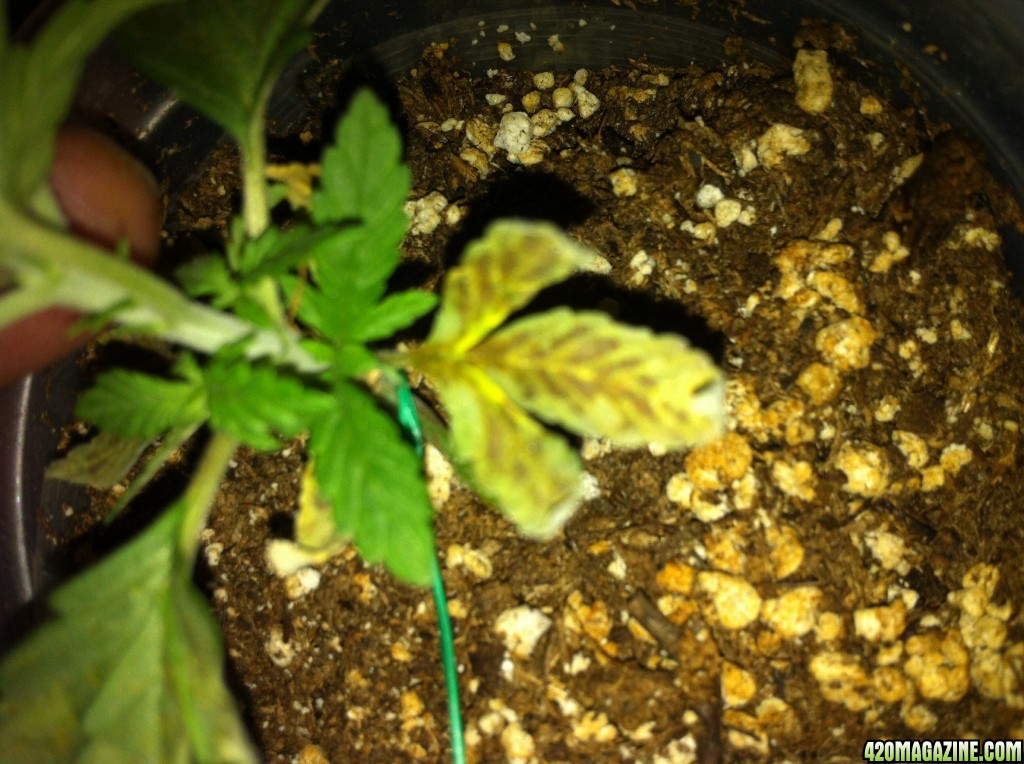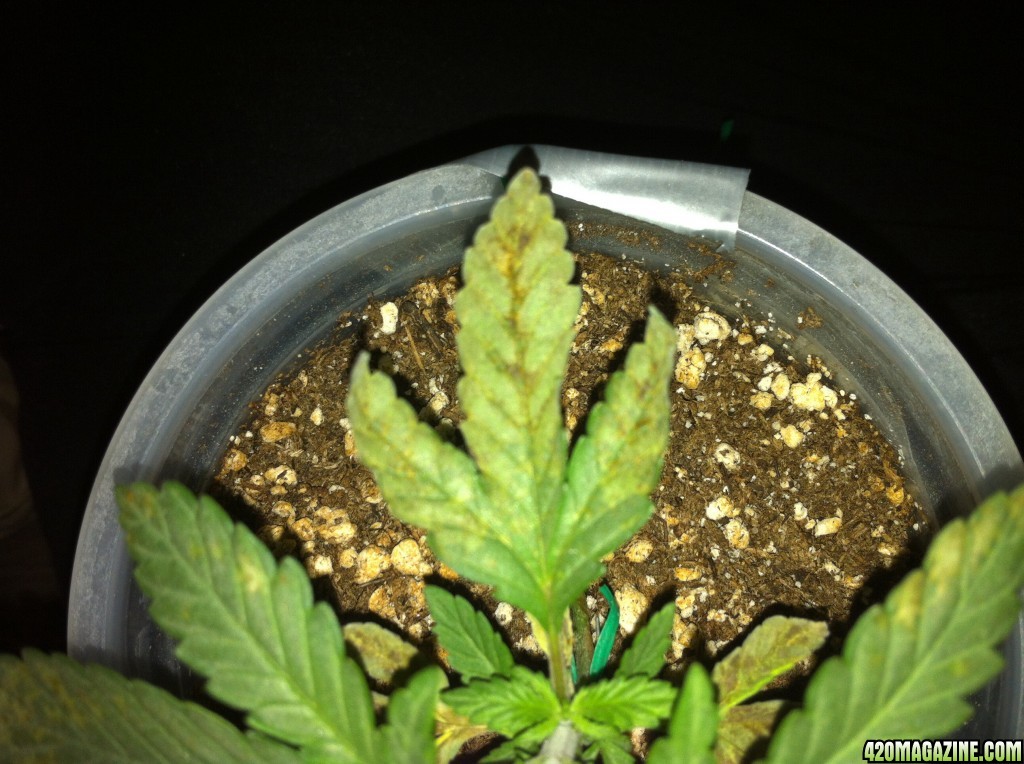Hi I've read the list of cannabis plant problems on ------------ but I can't seem to find a match I don't know whats wrong with my plant can someone help me diagnose this










How To Use Progressive Web App aka PWA On 420 Magazine Forum
Note: This feature may not be available in some browsers.





Hey guys thanks for the advice the oldest growth started showing the purplish black spots at first and then began withering and turning yellow it's been about four days and it's slowly taken over my whole plant and now my other plant is beginning to show similiar symptoms
First of all thank you for your time. I had originally suspected a phosphorus problem, the purple/black color began at the center of the oldest leaves and radiates out to the tips and after a couple days of this the same leaves began to curl upwards. As soon as I saw this I suspected a nutrient shortage and began feeding them the biothrive. I assumed it wasn't a phosphorus deficiency because I was feeding her daily without any improvement. Is it possible my nutrients are lacking phosphorus and I could use an additive?